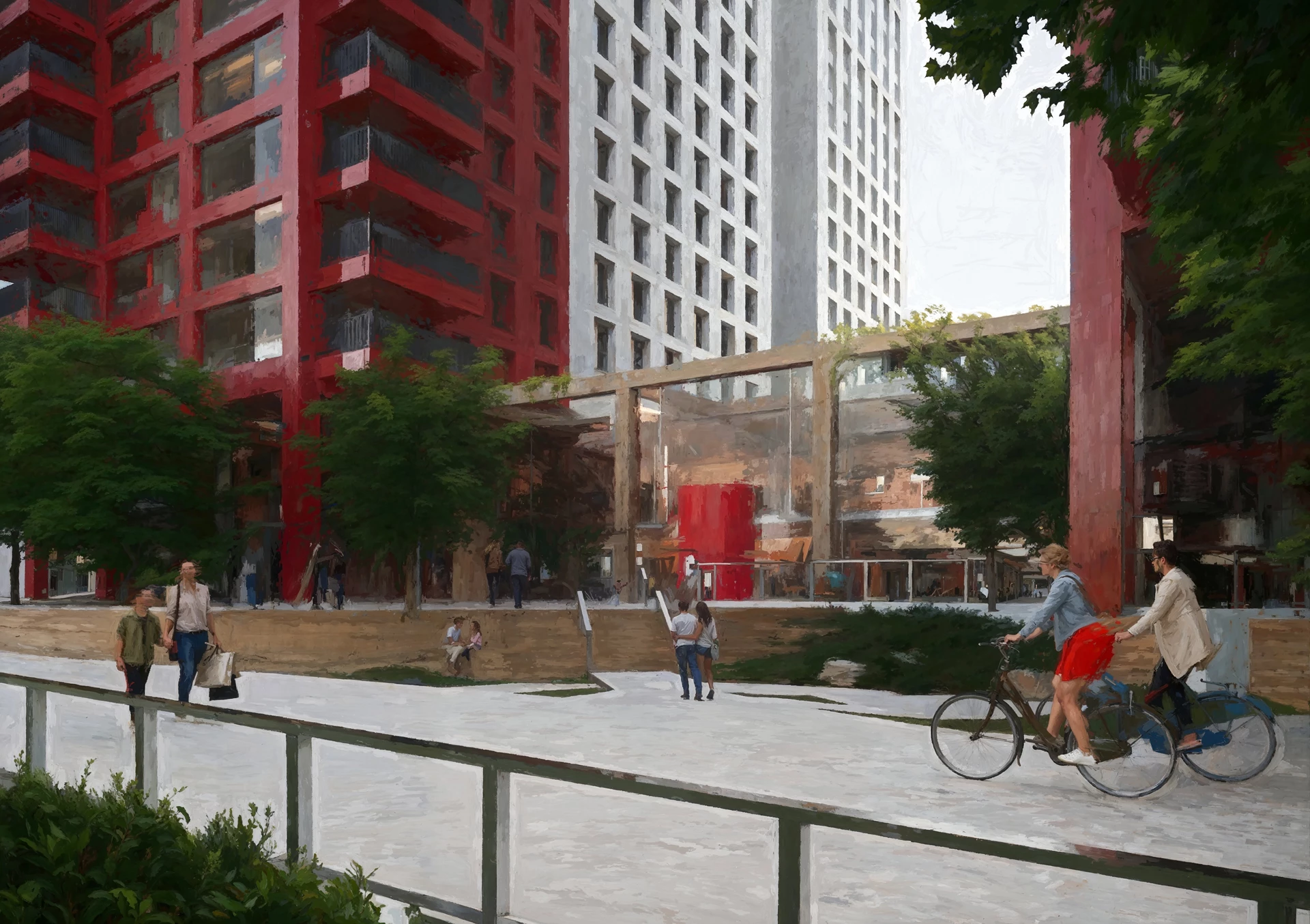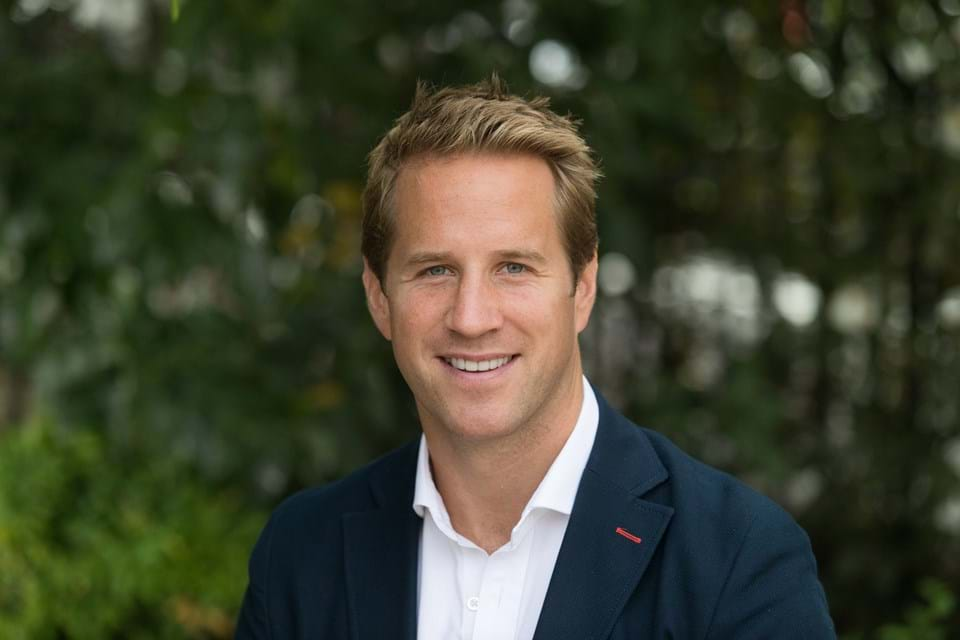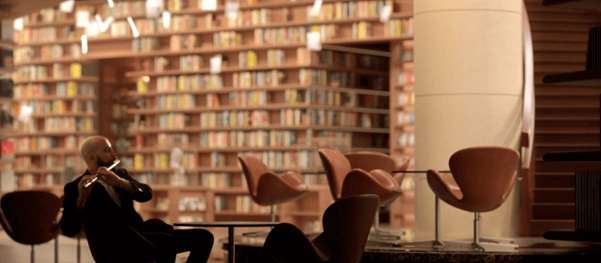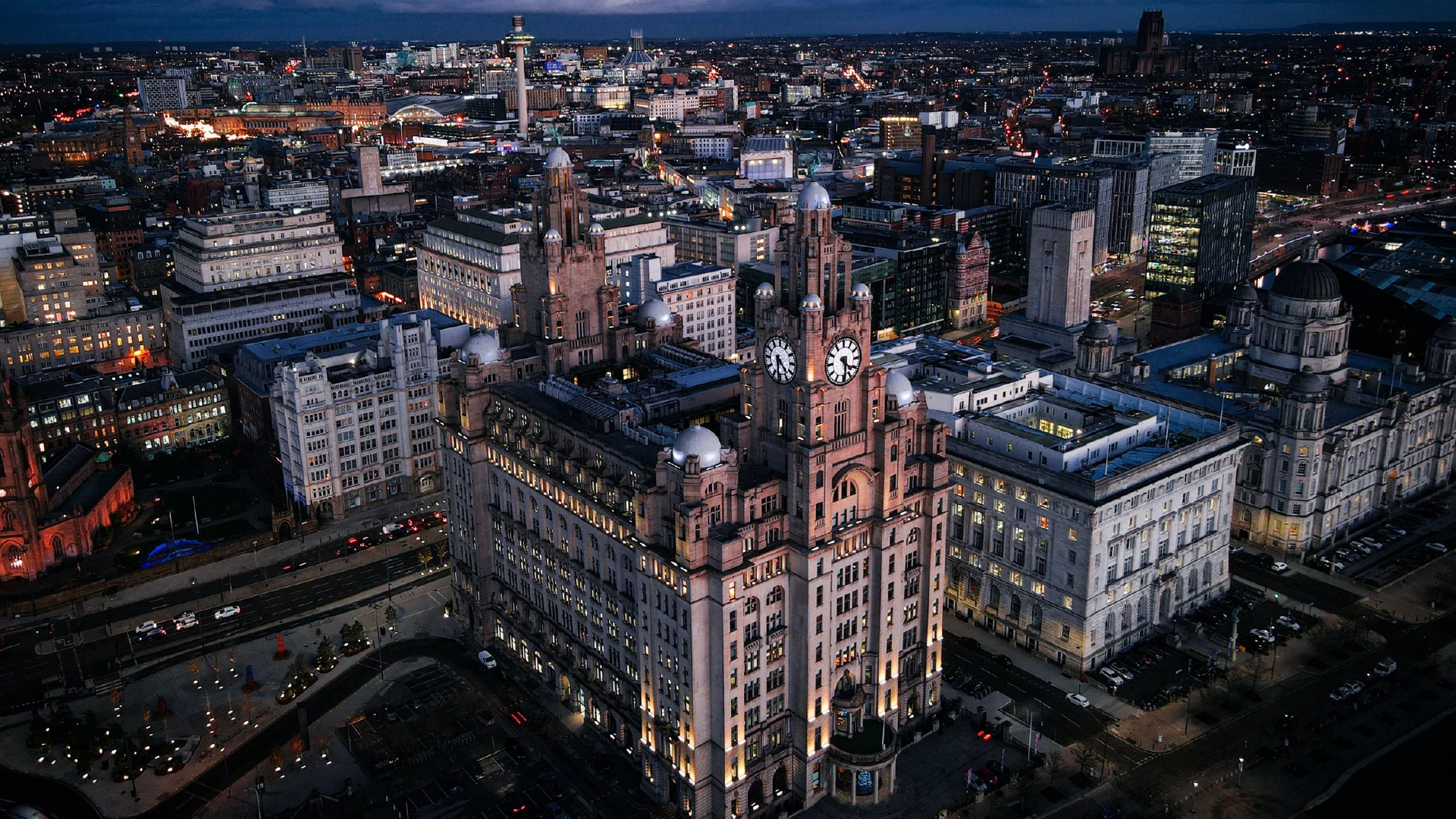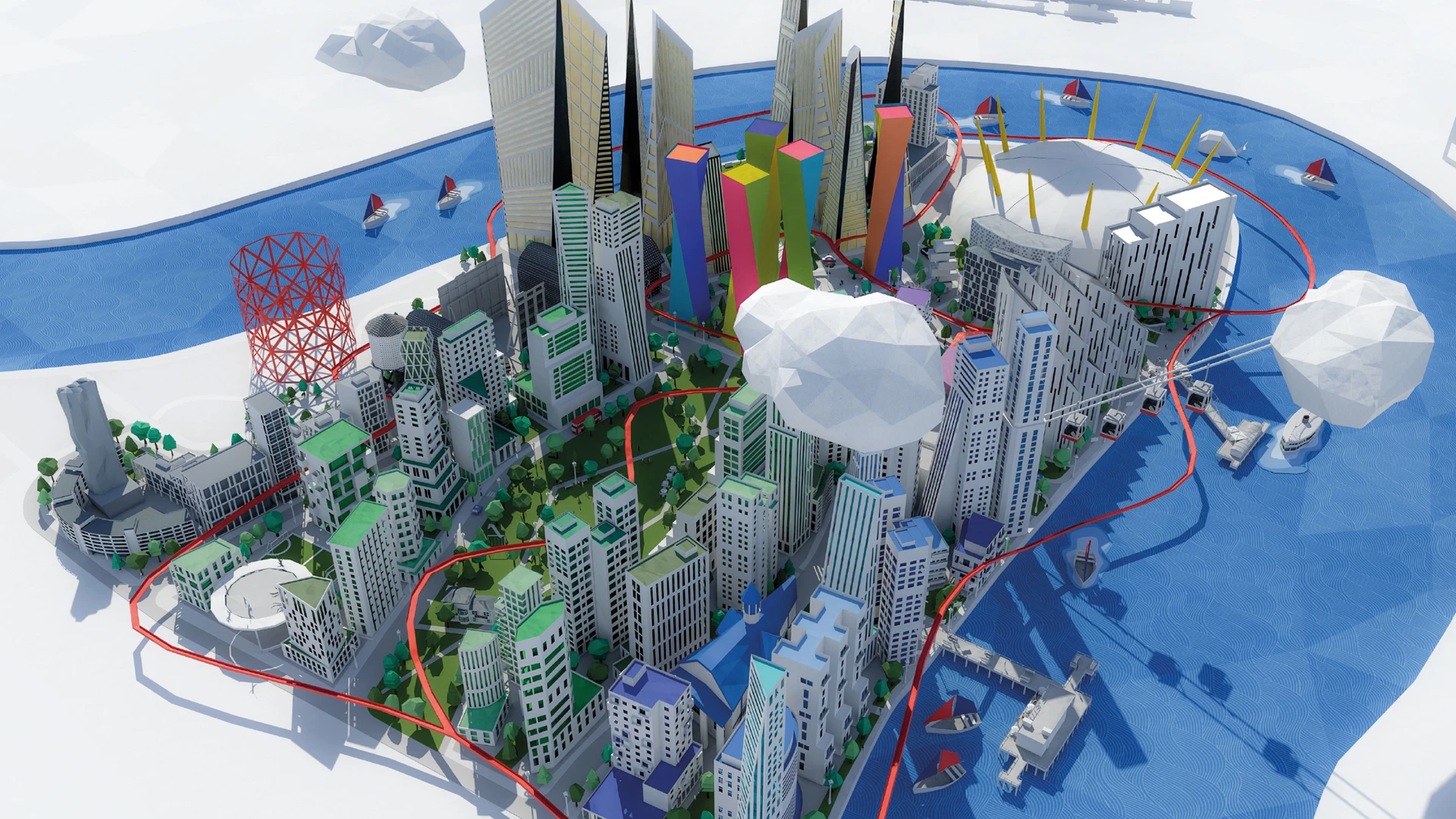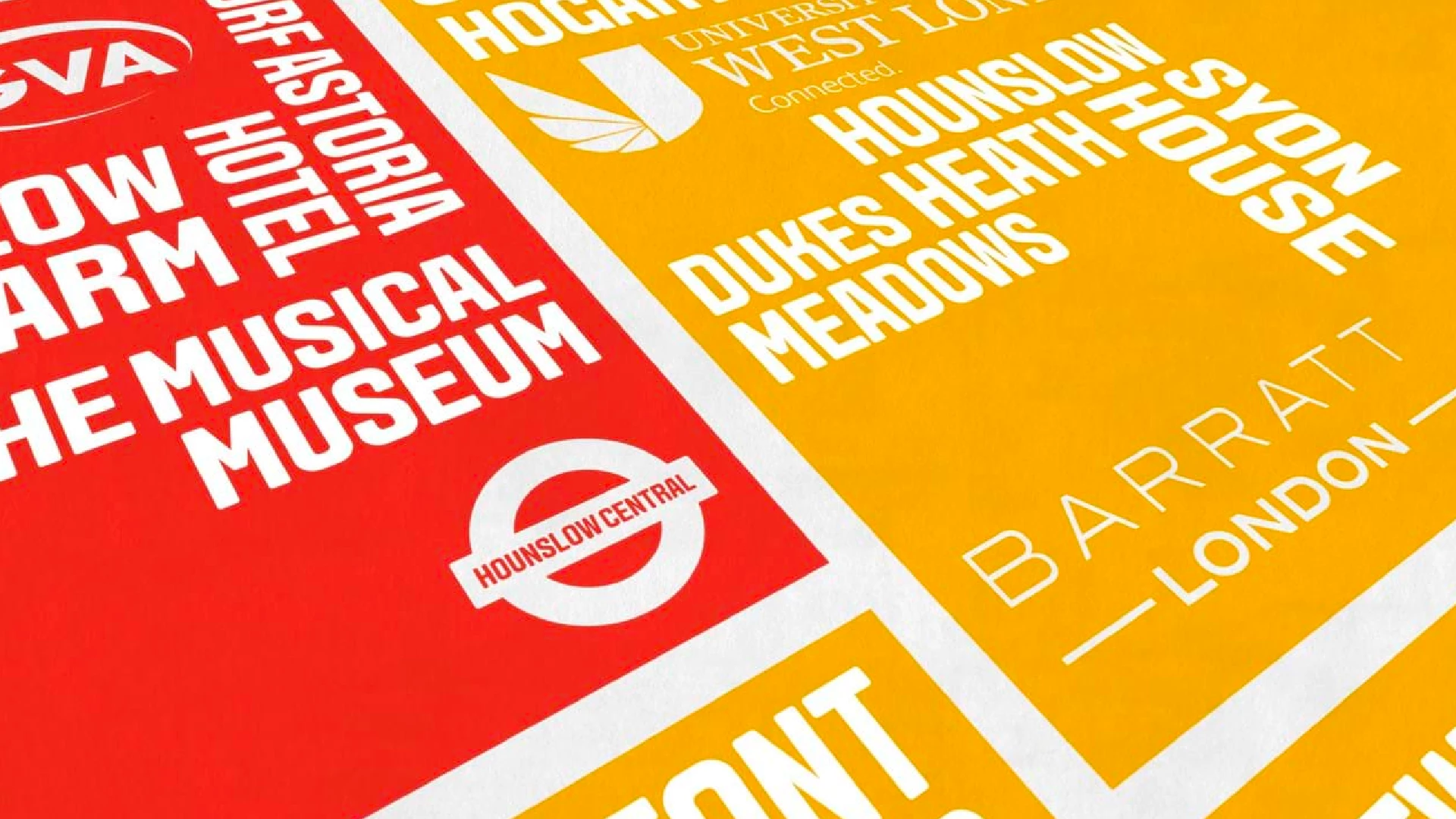Future Confident: Nigel Bidwell
JTP’s Nigel Bidwell shares how storytelling, collaboration and empowering young voices help to create more human, future-ready places
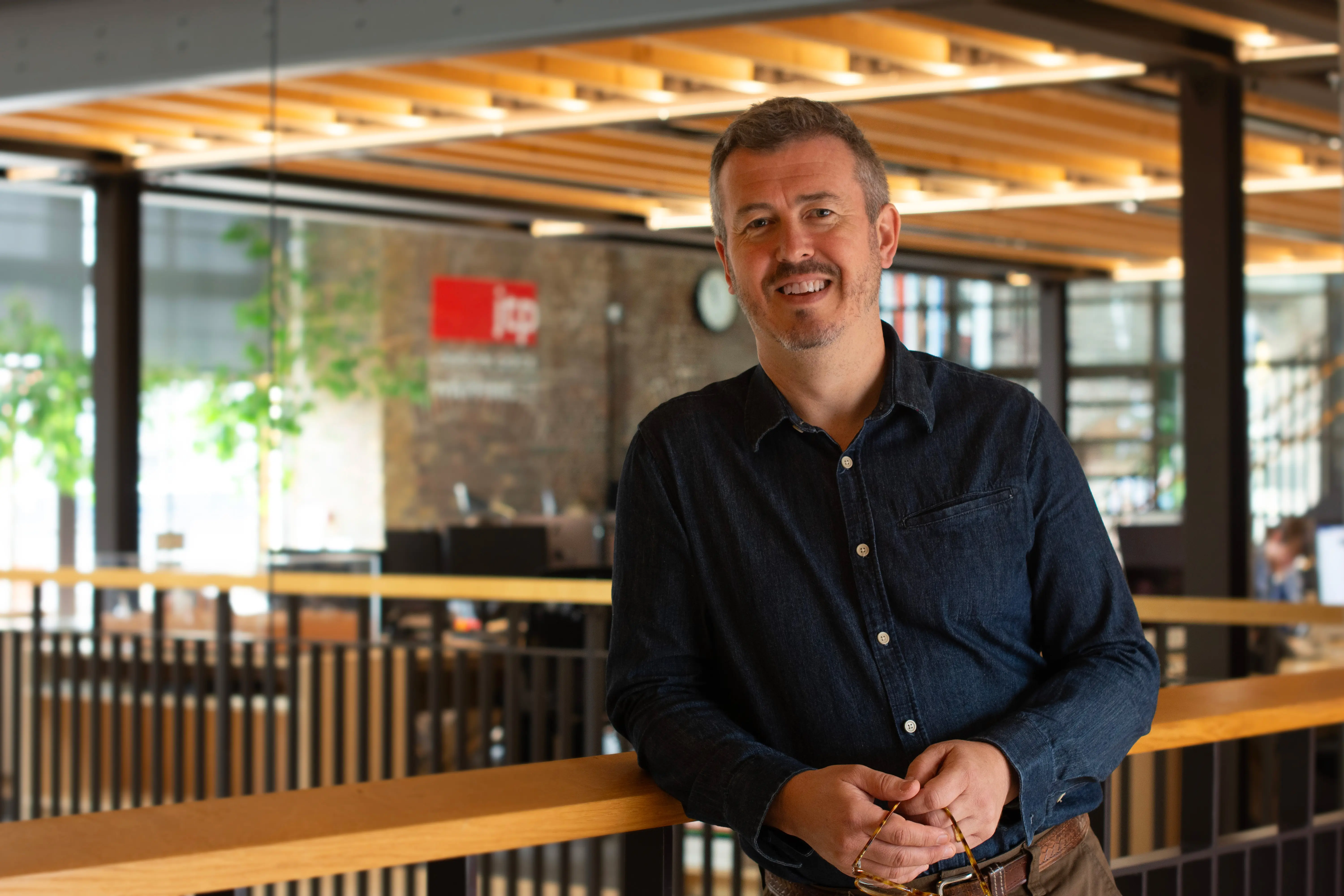
At Somewhere, we believe in the power of strategy, creativity and technology to equip businesses to face the future. Because while we can’t be certain of what’s ahead, we can be ready. We call this state of readiness ‘future confident’.
Can you tell us a bit about your current role and career so far?
Nigel: I’ve been very lucky in my career. Having completed my degree in Architecture at Newcastle University, I was at first unsure whether this was a profession that I wanted to join. However, after working at Buckinghamshire County Council’s Architecture Department for my first year out and then meeting Tony Watson, an inspirational tutor, when I returned to Newcastle for my Masters, I slowly started to enjoy the processes involved and gained the confidence to express myself.
After exhibiting my work, I received a call from Terry Farrell & Partners and started my Part 2 placement with this distinguished studio. I ended up working with Terry for 19 years and whilst he could be challenging, I developed a design process and a rigorous approach to advocating design, whilst helping lead some of London’s most exciting projects such as Chelsea Waterfront, Earls Court, Convoys Wharf and Old Oak Common.
I then moved to JTP as I was drawn to its values, spirit and drive. I’ve now enjoyed seven years at the practice. As an equity partner, I’ve had the pleasure of shaping the business, leading challenging urban projects and furthering JTP’s engagement processes.
JTP is known for its pioneering new approaches to masterplanning, architecture, placemaking and community engagement – what’s the biggest impact these have had?
Nigel: It’s our 30th anniversary this year and our founder, the late John Thompson, instilled a social awareness and interest that lives on in the practice and defines our culture. In our industry relationships are key and John was a trailblazer for collaborative placemaking.
This philosophy straddles all aspects of our work today, from how we work with clients to how we understand the people that will use our designs. In our studio we have a special space called the Charrette Room and we invite clients and specialists to learn and draw with us. This is a far cry from “see you in two weeks when we’ve got the solution”, but rather looks to establish a shared knowledge and consensus at each stage of the process.
In a similar way, we invest in research to understand specific needs of people. Through online surveys, visits, market benchmarking, interviews, and workshops with providers and students we were able to establish what ‘quality’ looked like for post-covid PBSA. And of course, there are our unique engagement processes; refined over 30 years and successfully deployed worldwide. I think the benefits of these approaches are now better understood and are shaping policy and best practice.
You’re known for designing places that invite people in. What do you think makes public realm feel alive and human, and how do you see that evolving in future neighbourhoods?
Nigel: It’s the endorsement and use of spaces and buildings that makes them successful. As architects we can only do so much during the design process to ensure this will happen. We will agonise over the look and feel, spending hundreds if not thousands of hours in the careful consideration of our design but we shouldn’t forget about providing the opportunity and sometimes the flex, for communities to shape and to take these facilities on and make them their own.
We often look back to look forward. JTP recently visited several neighbourhoods we designed almost 20 years ago to see if our imagined sense of community had taken root. The two most successful were Graylingwell Park in Chichester and Cholsey Meadows in South Oxfordshire with both having benefitted from established Community Development Trusts. These vehicles for long term stewardship place the control in the hands of local people and it was clear in these instances that they had allowed for the management of facilities, the securing of funding and an extensive programme of community events and development projects breathing continued life into these places.
I can see this being increasingly important in creating strong and resilient communities moving forwards and you can read more about this in our report: Creating New Towns - Six Key Themes.
JTP champions ‘placemaking’ in its truest sense. How do you make sure people’s voices are truly heard when shaping new communities?
Nigel: Lots of architectural practices say they ‘do consultation’ attending the odd event and asking their appointed PR company, ‘how did it go?’. We run our own engagement processes, using data to understand who is there and then spend time in the area to get to know different communities rather than just those with the loudest voices. We do this before designing the engagement process with our clients as we know every place is special and every client has a personality.
What makes us different is that we are the ones holding the pencil, meeting and drawing with local people and listening to their unique insights. Once you invest in a conversation, people are incredibly generous with their time and information, and our projects are enriched by the process and the community’s outcomes are optimised. It’s a win-win, as our clients are able manage risk in bringing forward their development and achieve consents more quickly.
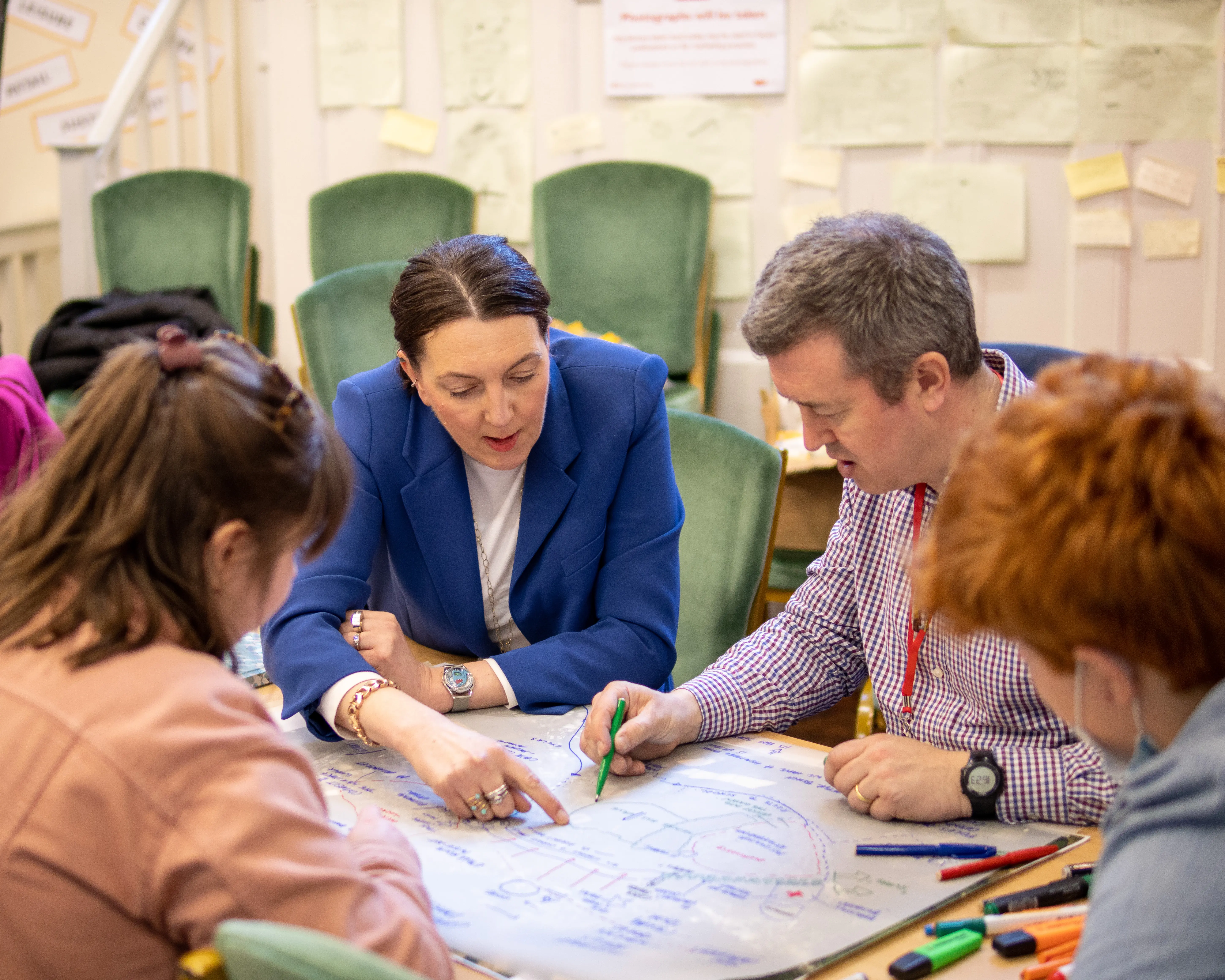
Like Somewhere, you believe in the power of storytelling. Tell us more about your interest in the communication of design narratives through presentation and drawn storytelling.
Nigel: Design underpins everything that an architect does, but its explanation and communication is critical. I mentioned Tony earlier and he taught me that there may be many ways to solve a design problem, but you must choose the one that you believe in and therefore can argue for. I regularly sit on Design Review Panels and it’s fascinating to see the good and bad of advocacy.
JTP are known for ‘doing difficult’ so I’m interested in making complex proposals simple and accessible, and building an engaging narrative. If it’s well judged it can define and hold together the vision of a project, shaping the outcomes at every stage of its delivery. I love hand drawing, and I’ve always used cartoons and diagrams twinned with words to convey ideas and approaches. I know I’ve hit the mark when things appear ‘obvious’ and I overhear conversations where it’s adopted and repeated by others as an embedded part of the story of the project.
What’s one urban challenge you think we need to be talking about more, and what might design be able to do about it?
Nigel: I heard a statistic the other day saying that over 80% of young people don’t think they have a say in the shaping of their physical environment. This is damning for the profession and one that many people are trying to change. For me this is all about getting young people excited about design and engaging with them on their terms.

JTP has forged good relations with our local school, Mulberry School for Girls in Whitechapel, and it’s been uplifting to run lessons, assemblies and host them at the office to explain that the design profession is within their grasp. You can imagine my satisfaction therefore, when student at our recent careers fair told me that she had been accepted at university to read architecture.
The second aspect is involving young people in the process. JTP is a keen supporter of the People’s Pavilion initiative, led by the inspirational Neil Onions but we have also pushed ourselves to improve our engagement techniques on projects to be more inclusive. We’ve worked recently with 2-3 Degrees to set up a paid youth panel, that share their perspectives with us and in return grow in confidence and gain presentation techniques. We use Instagram and TikTok to reach a younger demographic, engage with Minecraft, VR and use live time Midjourney image generation at our community sessions to encourage the younger voice.
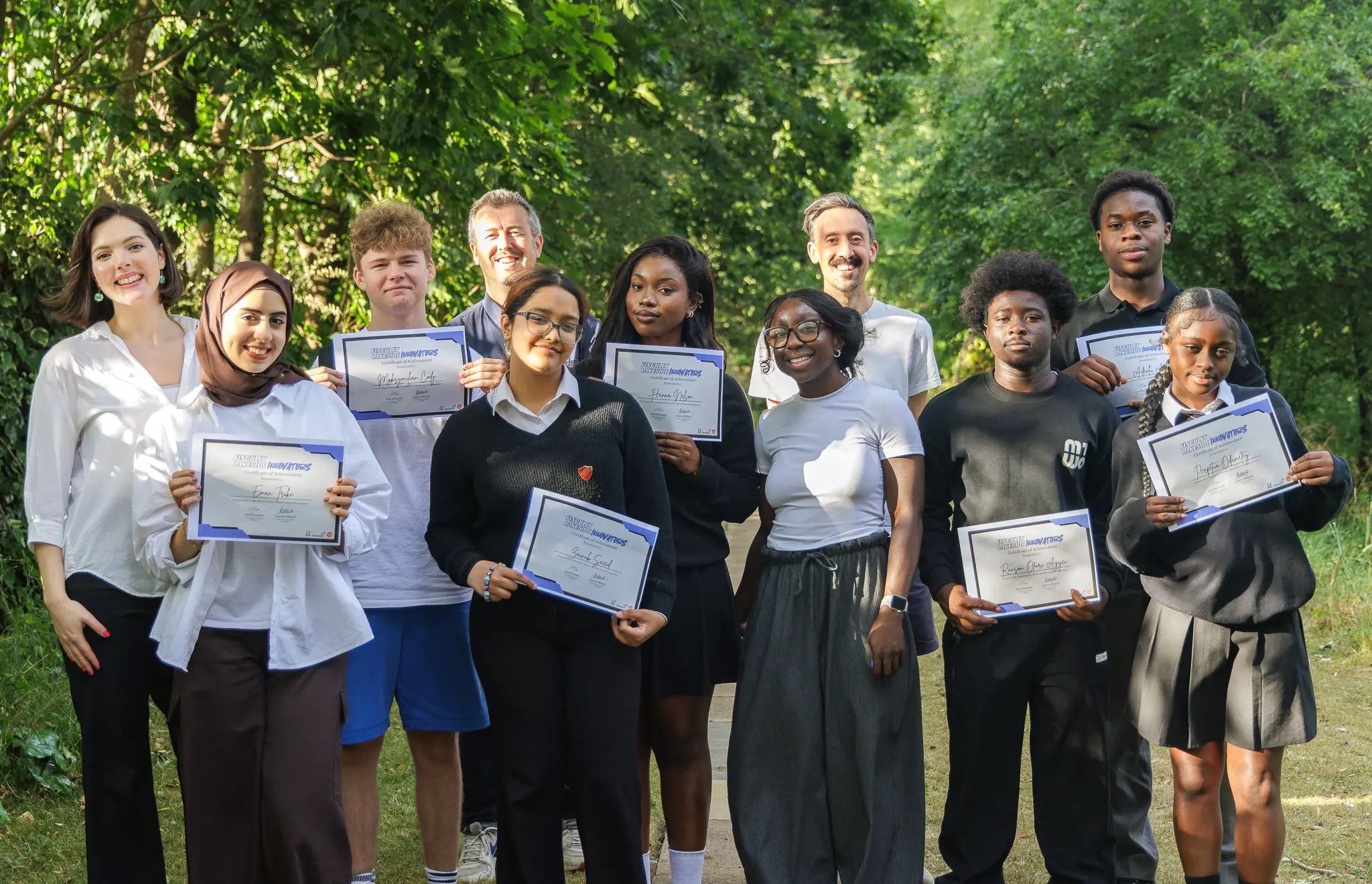
Finally, if someone walked through a neighbourhood that you helped shape 30 years from now, what would you hope they feel, notice or remember?
Nigel: I would hope that they would feel welcome, after all, design should be about placing people at the heart of everything we do.

.webp)
